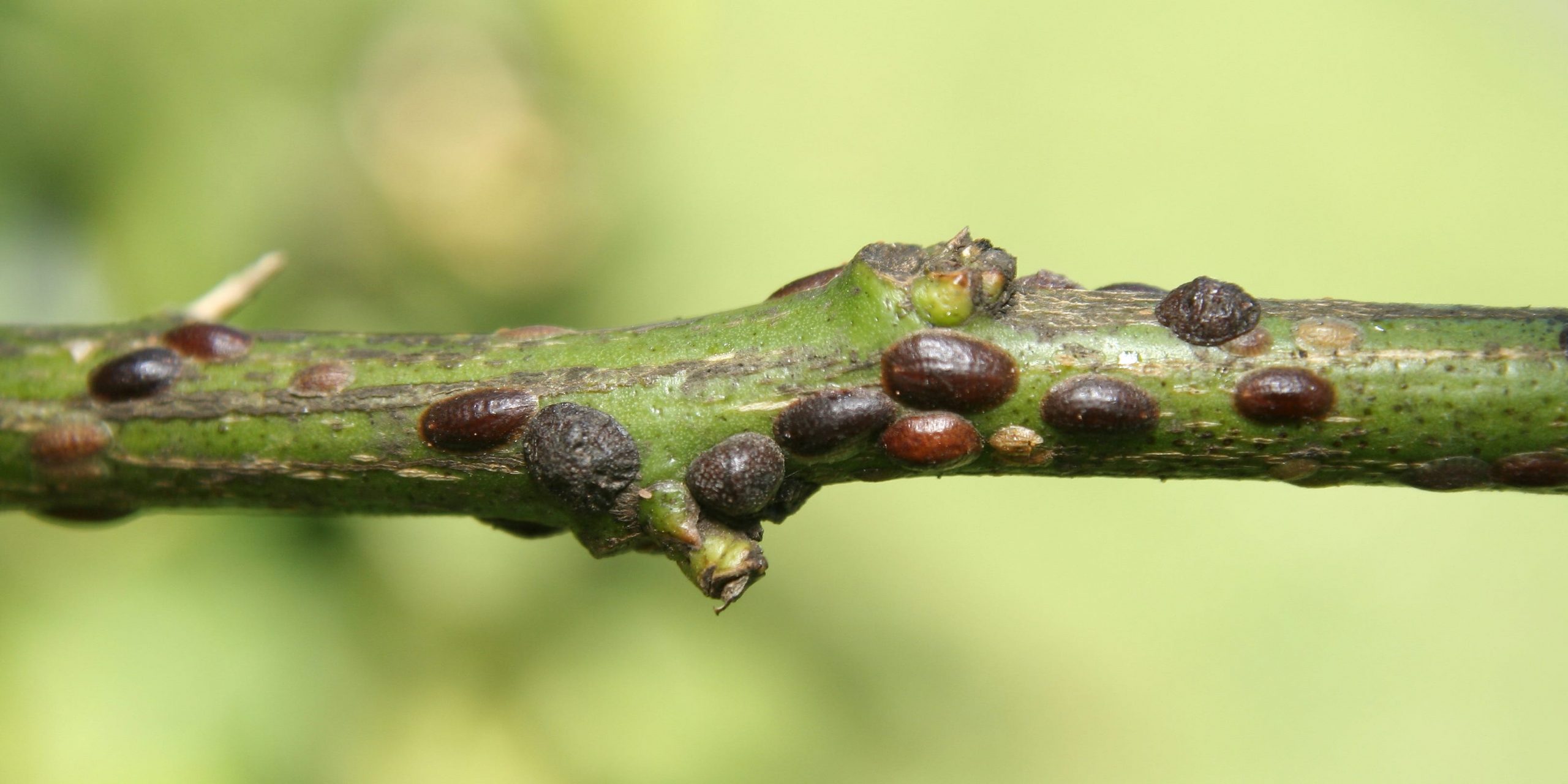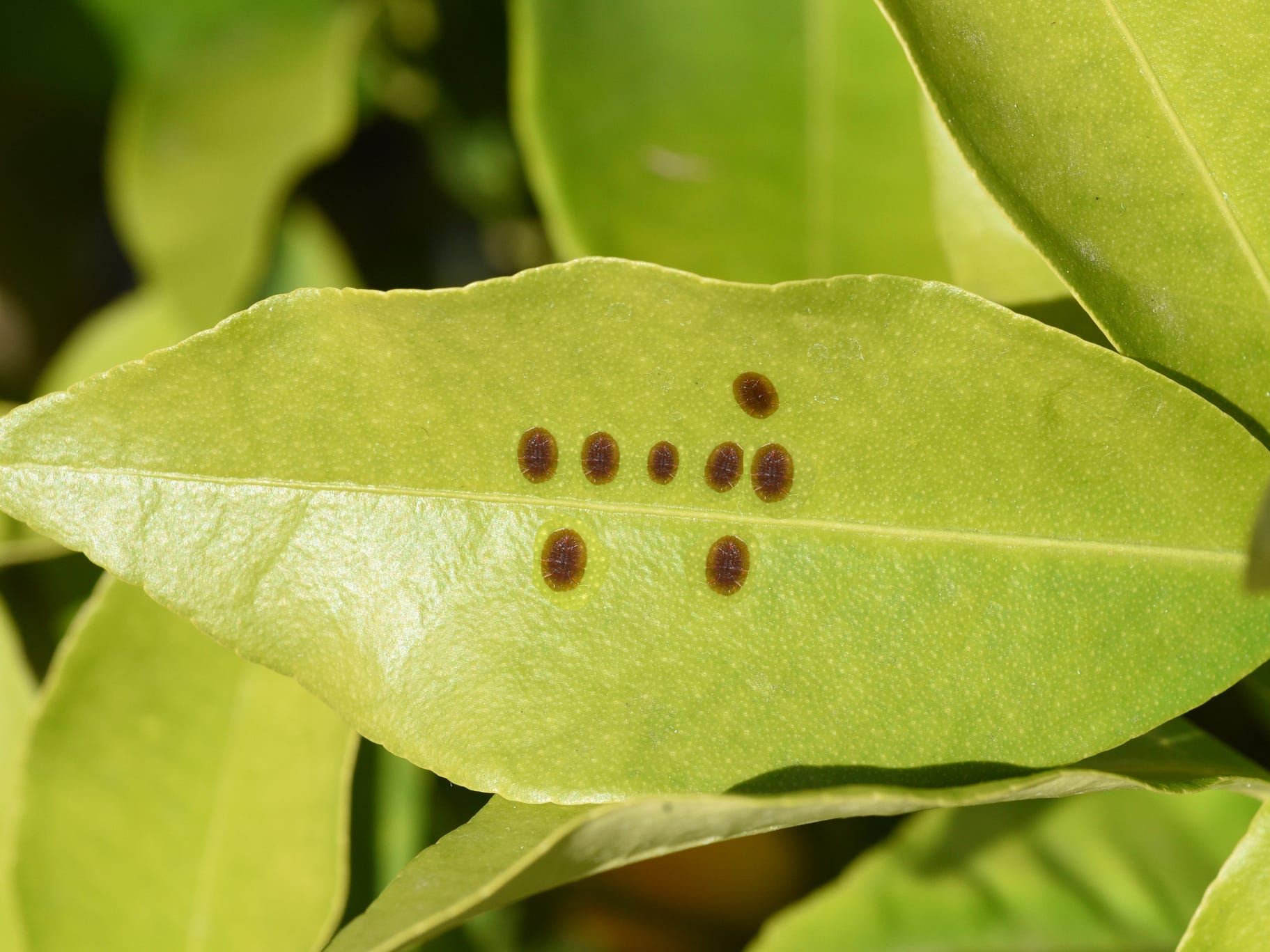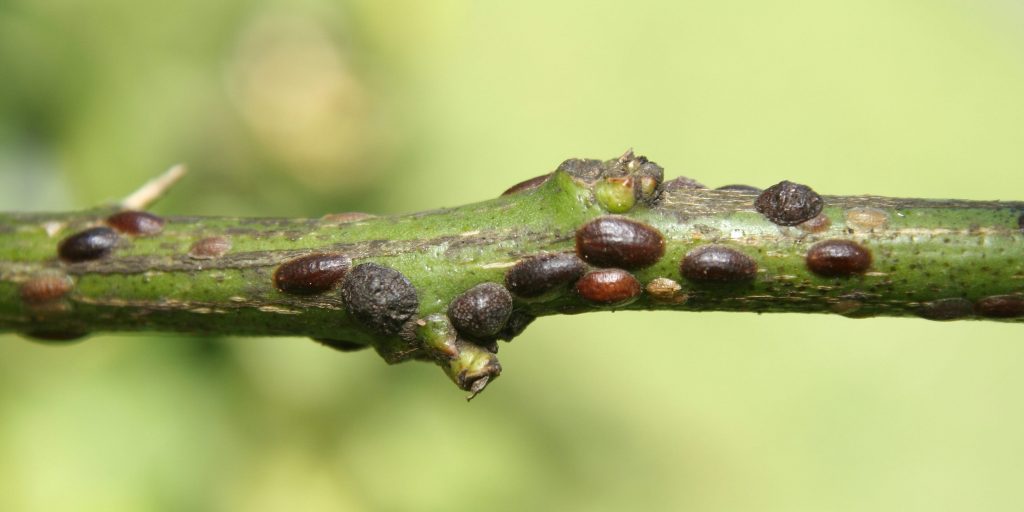
- Scale is a blanket term for little sap-sucking insects that can kill your houseplants.
- If your plant develops scale, the first step is quarantining the plant.
- Prune any especially infected stems, then use a cotton swab, alcohol, and neem oil to kill pests.
- Visit Insider's Home & Kitchen Reference library for more stories.
"People sometimes confuse scale for a disease," says Annette Gutierrez, co-owner of Potted in Los Angeles, California. "It's actually a pest."
What we know as scale is caused by different tiny insects that latch onto the plant, form a protective covering, and feed on the plant's sap. When a house plant is stressed, it is especially susceptible to scale.
"House plants get a lot more stressed because they're not in their natural environment," says Gutierrez. "These little bugs are always around, looking for an opportunity." They can come into your home any number of ways, but often come in attached to new plants you bring into your home.
Identifying scale

There are several different kinds of scale. The scales themselves will either be soft and waxy or hard and "armored." They're small, but almost always form in clusters.
They can be a range of colors, but generally are beige, rust-colored, black, or sometimes even a color very similar to the color of your plant. You may also see what looks like black dusty mold on your plant. This is evidence that your plant is being devoured by these little pests.
If you notice scale or pests on one of your plants, first separate that plant from any other houseplants so it doesn't spread. If the climate is suitable for your infected plant, Gutierrez recommends putting the plant outside.
If bugs are present but no scales have formed, it's generally easy to spray the plant with a pesticide like neem oil to get rid of the bugs. Once the scales have formed, it's much more difficult.
"If you have a bad infestation, you should probably just throw the plant away," says Gutierrez. "I have sometimes done this." But, if scale has befallen one of your favorite plants and you'd like to commit to getting rid of the infestation, this is what you do.
How to stop scale from coming back
Once you've removed the scale from your plant, the best way to prevent future infestations is to make sure the plant isn't stressed. "Check in with your plant, make some quality time with it," says Gutierrez. Stress can come from overwatering, underwatering, too much light, or not enough light.
"Especially keep an eye on it when the seasons change," she says." If you're moving into a season with more or less light, you'll need to shift your watering schedule. If the soil is damp, the plant does not need more water, even if you're following its typical watering schedule.
Insider's takeaway
The best way to beat scale is to prevent it from the get-go. Be careful about introducing new plants into your home, and make sure you're not overwatering or underwatering your plants. If your plant does develop scale, quarantine it immediately, assess the damage, then either toss it or plan on putting it in a plant ICU for a few weeks.
